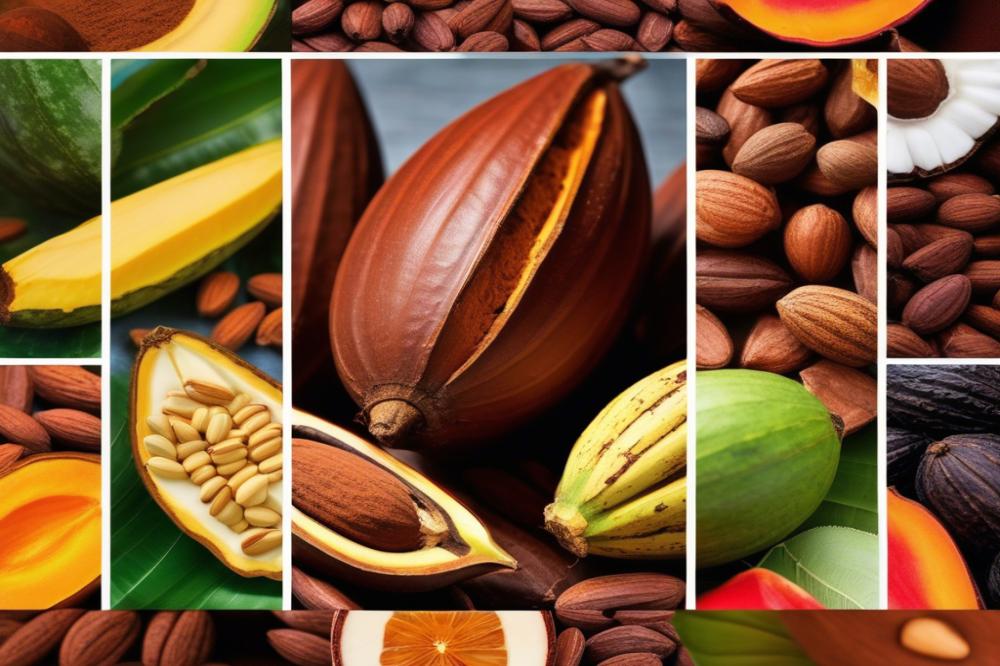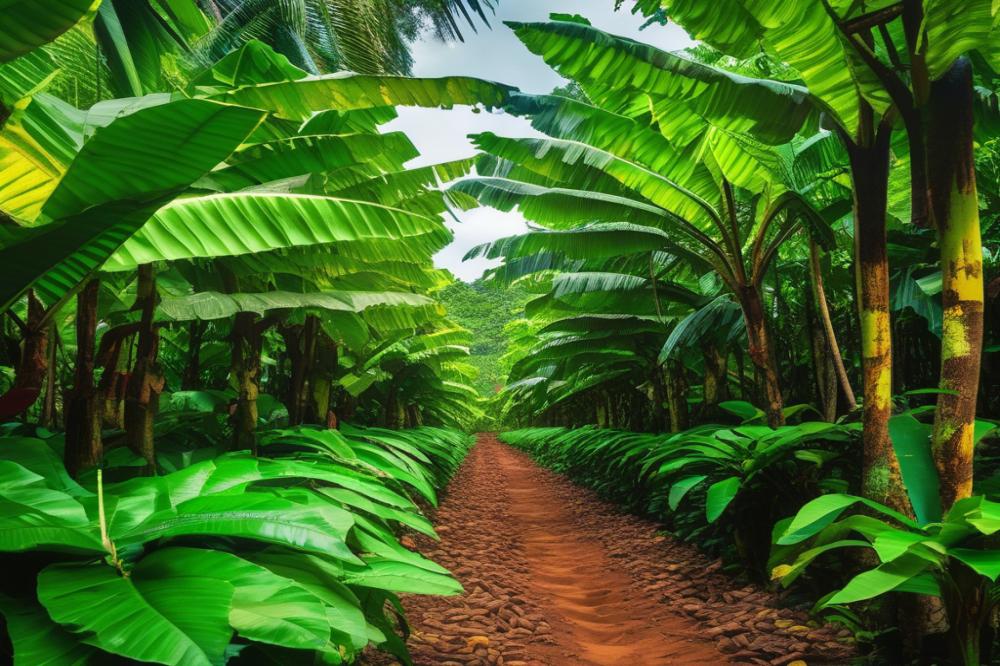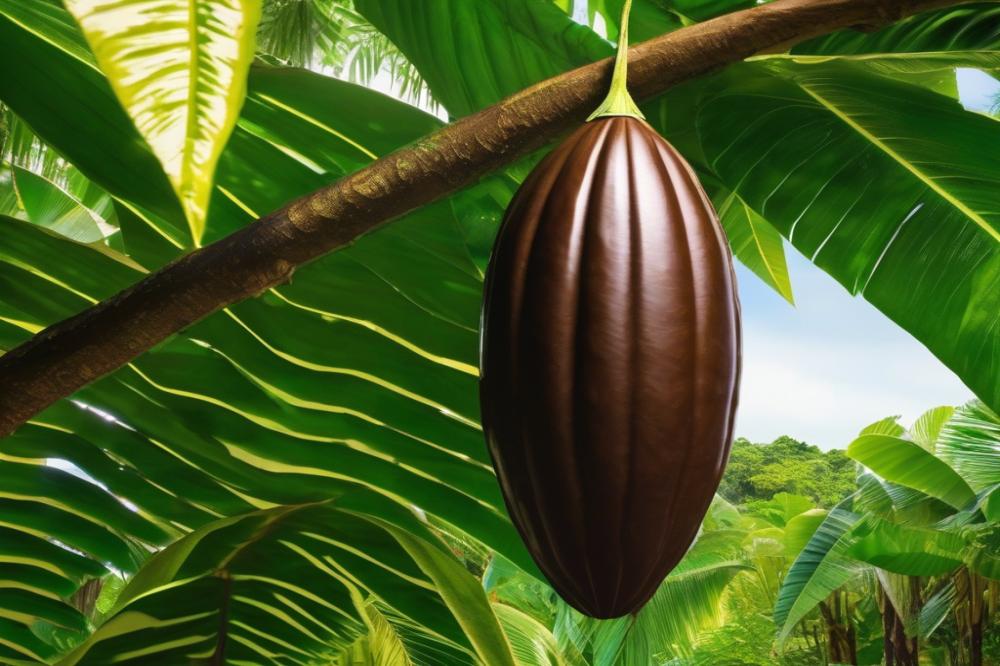Introduction
chocolatebix.com/cocoa-powder-vs-cacao-powder-what-s-the-difference”>chocolatebix.com/exploring-unique-cocoa-products-beyond-chocolate“>Premium Cocoa plays a crucial role in the chocolate industry. Quality matters when it comes to fine chocolate lovers. Many believe that the best chocolate comes from the finest cacao beans. These beans, sourced from around the globe, have distinct flavors and characteristics that elevate gourmet chocolate to new heights.
Cocoa farmers in regions like West Africa and Ecuador cultivate these precious cocoa beans. Their hard work and dedication contribute significantly to the production of exceptional chocolate. The process of transforming raw cacao into gourmet delights begins with these skilled farmers. Without their commitment to quality, the chocolate we enjoy today would not exist.
Sustainable farming practices are essential in cocoa production. They help protect the environment while ensuring that cocoa plantations remain viable for future generations. By using methods that support biodiversity, farmers can produce high-quality cocoa without harming the planet. This approach is becoming increasingly important as consumers are more aware of the cacao’s journey from bean to bar.
In exploring Cocoa Producing Countries, we can see how diverse and rich the world of Premium Cocoa can be. Each region brings its own unique flavors and farming techniques. Understanding these differences enhances our appreciation for fine chocolate. Together, these factors shape the current landscape of the chocolate industry.
Ecuador: The Home of Fine Chocolate
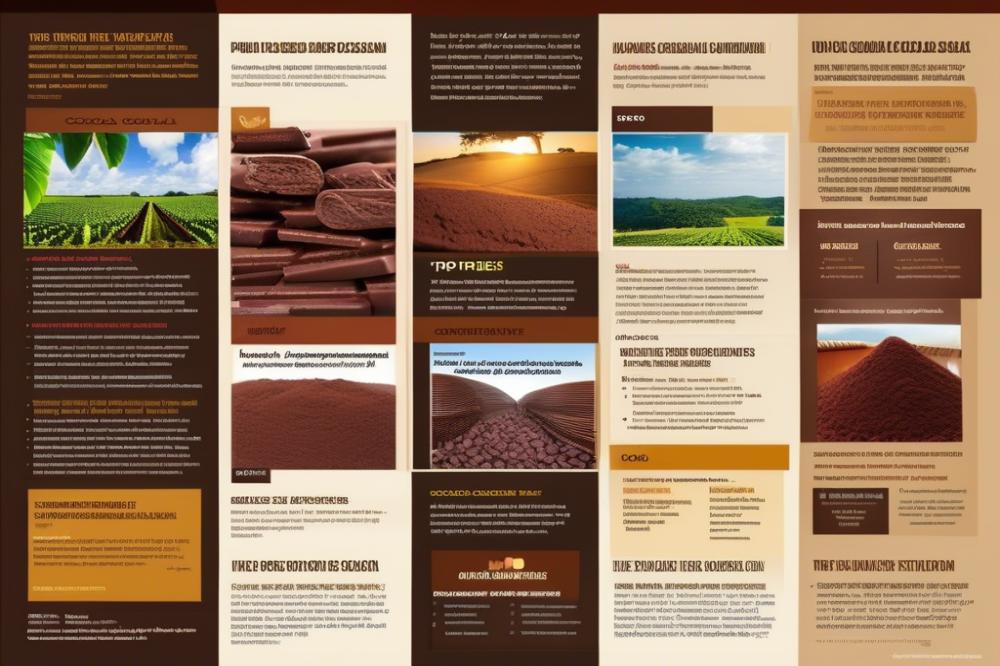
The distinct climate of Ecuador plays a crucial role in cacao cultivation. Nestled on the equator, the country benefits from ample rainfall and warm temperatures. This environment creates ideal conditions for nurturing rich and flavorful cocoa beans. Additionally, the fertile volcanic soil enhances the growth of cacao trees, producing beans that are highly sought after worldwide.
Among the top varieties cultivated in Ecuador, Arriba Nacional stands out. This cacao is known for its exquisite flavor profile and aromatic notes. Chocolate made from Arriba Nacional often has fruity and floral hints, making it a favorite among gourmet chocolate makers. These characteristics set Ecuadorian cocoa apart from beans sourced in regions like West Africa, where the flavor may differ significantly.
Cocoa farmers in Ecuador are committed to sustainable farming practices. Many utilize agroforestry techniques, which allow cacao trees to grow alongside other plants. This approach not only helps in preserving biodiversity but also improves the overall health of cocoa plantations. Passionate farmers often share their knowledge and techniques with one another, building a strong community focused on quality and sustainability.
Success stories among cocoa farmers highlight the impact of responsible cultivation. Some smallholders have cultivated niche markets for their fine chocolate products, leading to increased income and better living conditions. By prioritizing sustainable practices, they contribute to environmental health while producing premium cacao. As the demand for high-quality chocolate rises, Ecuador firmly establishes itself as a leader in the global cocoa industry.
West Africa: The Cocoa Powerhouse

West Africa stands tall as the leading region in the global cocoa market. Countries in this area are known for producing a significant portion of the world’s cocoa beans. Among them, Ivory Coast and Ghana are the top producers, delivering a vast supply of cacao that is crucial for fine chocolate manufacture.
Over the years, these nations have carved out a niche. Chocolate makers worldwide rely on their rich, flavorful cocoa to create gourmet chocolate that delights consumers. The favorable climates in West Africa provide the perfect conditions for cocoa plantations, allowing farmers to cultivate high-quality cacao that meets international standards.
Despite their dominance, cocoa farmers face numerous challenges. Poverty remains a serious issue, with many struggling to earn a fair wage. Additionally, climate change poses threats to cocoa production. Erratic weather patterns can damage crops and disrupt the delicate balance needed for sustainable farming practices.
Efforts are underway to combat these problems. Many organizations are promoting sustainable farming initiatives to help farmers improve their livelihoods. By implementing better agricultural techniques, farmers can increase their yields while protecting the environment. Such strategies not only benefit the farmers but also contribute to the production of premium cocoa.
Consumer awareness is growing, too. People are increasingly interested in where their chocolate comes from and how it is made. Ethical sourcing has become a key factor for many chocolate brands. This focus ensures that cocoa farmers receive fair compensation for their hard work and dedication.
In contrast, countries like Ecuador also produce notable cacao. However, West Africa’s position remains dominant. As the global demand for fine chocolate rises, the influence of West African cocoa continues to expand. Their ability to provide quality cacao makes them indispensable in the chocolate industry.
Peru: Emerging Market for Premium Cocoa
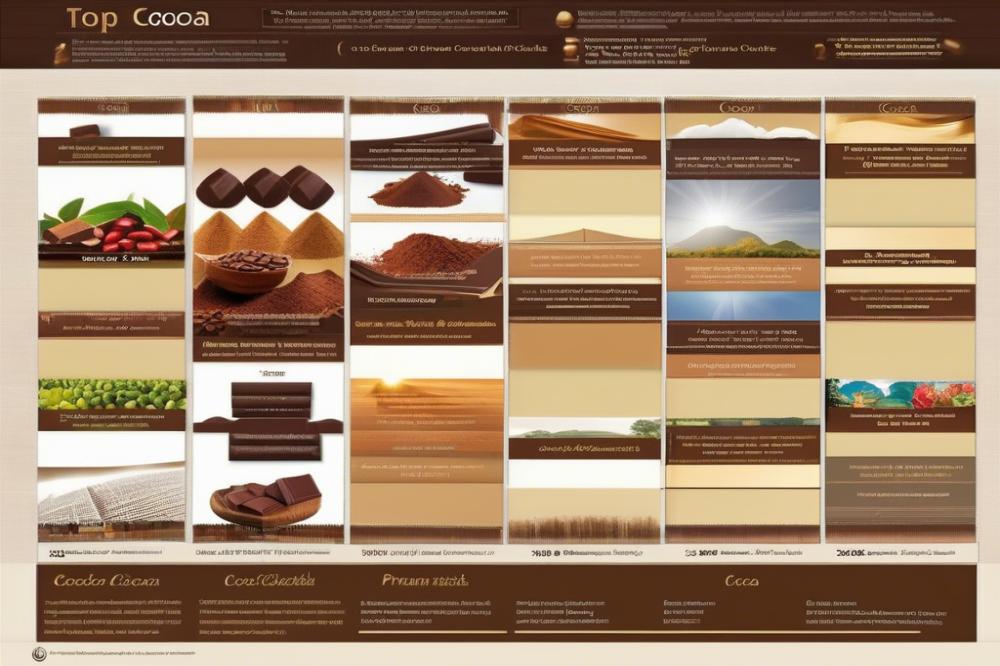
Peru has become increasingly recognized for its fine chocolate. Many people appreciate the rich flavors that come from its unique cacao varieties. This country is not just about traditional chocolate; it offers a gourmet experience unlike any other.
When exploring Peru’s cacao, you’ll find several distinct types. Criollo cacao is known for its fruity and floral notes. On the other hand, Forastero beans are bolder and more robust. Additionally, Trinitario cacao combines both profiles, resulting in a chocolate that balances sweetness and strength. Each variety plays an essential role in the diverse flavorful landscape of Peruvian chocolate.
Attention to sustainable farming practices is crucial for Peru’s cocoa farmers. By prioritizing environmental health, they have made significant strides in improving cocoa plantations. Techniques like agroforestry and organic farming not only protect the land but also support local economies. Farmers benefit from higher quality beans because healthy trees yield better cacao. This dedication to sustainability attracts chocolate makers who want ethically sourced ingredients.
In recent years, Peruvian chocolatiers have gained international acclaim. Their commitment to quality and unique flavors places them on the map alongside countries like Ecuador and those in West Africa. The fusion of traditional methods with modern techniques highlights Peru’s promising future in the world of fine chocolate.
Dominican Republic: The Island of Cocoa
The Dominican Republic is a treasure trove for cacao lovers. Known for its diverse cacao varieties, this island nation produces beans that are rich in flavor. Each type of cacao brings something special, whether it’s a fruity note or a deep, nutty character. These distinct flavors are why the country is gaining popularity in the fine chocolate market.
The significance of this Caribbean nation cannot be overstated. While many look to West Africa for their cocoa beans, the Dominican Republic stands out for its commitment to quality. Gourmet chocolate crafted from Dominican cacao is becoming a favorite among chocolate enthusiasts. Chefs and chocolatiers around the world are seeking out these beans to create extraordinary treats.
Cocoa farmers play a crucial role in maintaining this reputation. Many farmers are now embracing sustainable farming practices. This commitment allows for higher-quality beans and helps the environment. As the world shifts towards organic products, the Dominican Republic’s cocoa plantations are leading the way in this movement. By focusing on eco-friendly methods, they not only protect their land but also appeal to a growing market of conscious consumers.
Efforts to support these farmers are essential. Organizations and local communities are working together to provide resources and education. This helps farmers improve their techniques for growing and processing cacao, ensuring higher yields and better quality. Such partnerships are vital in promoting the unique flavors of Caribbean cocoa, setting it apart from other regions like Ecuador.
Fine chocolate from the Dominican Republic is more than just a treat; it’s a story. Each bar reflects the hard work of farmers and the rich cultural heritage of the island. So, the next time you savor a piece from this region, know that it carries the essence of the land from which it came.
Venezuela: The Land of Exotic Cocoa
Venezuela is famous for its legendary cocoa beans, especially the Criollo variety. Known for its aromatic qualities, Criollo is among the rarest and most prized types of cacao. The unique flavor profile of Venezuelan cocoa draws chocolate lovers from all over the globe. Fine chocolate makers often seek out these exceptional beans to create gourmet chocolate.
Traditional farming methods play a crucial role in keeping the quality of cocoa high. Many cocoa farmers rely on age-old practices passed down through generations. These methods are vital for preserving the distinct characteristics of the cocoa beans. Sustainable farming techniques also help maintain the land’s health. This allows the plantations to produce rich beans year after year, contributing to the heritage of exceptional chocolate.
However, current challenges have cast a shadow over cocoa production in Venezuela. Economic difficulties have impacted many farmers, making it hard for them to carry on their craft. Furthermore, competition from cocoa plantations in regions like West Africa and Ecuador has increased. Sadly, some farmers face the risk of abandoning their traditional practices altogether. This could lead to the loss of the exquisite quality that Venezuelan cocoa is famous for.
Despite these obstacles, those passionate about chocolate continue to support Venezuelan cocoa. There’s a strong desire among consumers to appreciate the effort that goes into sourcing these fine cocoa beans. Ultimately, preserving Venezuela’s rich cocoa legacy is essential for chocolate enthusiasts everywhere.
Brazil: A Diverse Cocoa Landscape
Brazil has a rich history with cocoa that dates back several centuries. The country’s warm climate and fertile soil provide ideal conditions for cacao cultivation. Today, Brazil stands as one of the largest producers of cocoa beans in the world. This legacy is especially pronounced in regions like Bahia and Pará, where cocoa plantations thrive.
Regional variations in Brazil’s cocoa production are remarkable. Different areas yield distinct flavors and characteristics in cacao. Bahia, famed for its full-bodied beans, contrasts sharply with Pará, known for its fruity and floral profiles. This diversity is crucial in the world of fine chocolate, allowing artisans to create unique blends that captivate chocolate lovers.
Brazilian cocoa farmers play a vital role in both agriculture and the economy. Many of these farmers focus on sustainable farming practices, which help protect the environment. By employing eco-friendly techniques, they not only boost crop quality but also contribute positively to local biodiversity. This commitment to sustainability makes Brazilian cocoa a responsible choice in the gourmet chocolate segment.
The country’s commitment to high-quality cocoa is attracting attention worldwide. Brazilian chocolate makers are gaining recognition for their fine chocolate products. Specialty brands emphasize the diverse terroir of Brazilian cacao, showcasing its potential compared to famous producers in West Africa or Ecuador. Consumers are eager to explore these flavors, reaffirming Brazil’s position in the premium chocolate market.
With growing interest in ethical sourcing, Brazilian cocoa is becoming increasingly valued. More chocolate enthusiasts seek out options that support sustainable practices. This trend has a significant impact on the market, as consumers are willing to pay for quality and environmental responsibility. Overall, Brazil is carving out a niche in the global chocolate industry.
Malaysia and Indonesia: Southeast Asian Cocoa Producers
The cocoa industry in Malaysia and Indonesia plays a significant role in the global market. Both countries, located in Southeast Asia, have been cultivating cacao for decades. Cocoa farmers work hard to maintain plantations that contribute to the supply of cocoa beans. While West Africa remains the largest producer, these nations offer a promising alternative.
Innovative farming techniques are emerging in both regions. Farmers are adopting sustainable practices that enhance soil health and increase yields. Crop diversification allows them to produce not only cocoa but also other cash crops. Such strategies help prevent disease and ensure economic stability. They also promote better working conditions for cocoa farmers.
As demand for fine chocolate grows, the potential for gourmet chocolate from Malaysia and Indonesia increases. The world’s palate is shifting towards premium quality over quantity. Every batch of cocoa from these countries can be specially crafted, appealing to chocolate lovers globally. High-quality cocoa beans have the ability to shine in fine chocolate products, attracting attention from chocolate makers around the world.
With the right investment and training, these Southeast Asian nations can emerge as key players in the premium cocoa market. Their unique climate and dedicated farmers create opportunities that others can’t match. This potential invites international buyers to explore the rich flavors of local cocoa and discover new profiles in chocolate.
Honduras: Rising Star in the Cocoa World
Honduras has emerged as a noteworthy player in the realm of fine chocolate production. Increasingly, this Central American nation is gaining recognition for its high-quality cocoa beans. Farmers in the region are dedicated to improving the quality of their crops. They are using advanced techniques that highlight the unique flavors of Honduran cacao.
Cocoa farmers are also embracing sustainable practices. These methods help protect the environment while promoting healthier cocoa plantations. Many farmers grow cacao alongside other crops. This intercropping technique enhances soil quality and promotes biodiversity. By focusing on sustainable farming, they contribute to a more stable local economy.
The fine chocolate market in North America is benefiting significantly from Honduran cacao. Gourmet chocolate producers are starting to take notice. They recognize that quality flavors can stand alongside those from West Africa and Ecuador. Discovering chocolate made from Honduran cocoa offers consumers a new experience. The taste profiles can be rich, fruity, and complex, attracting chocolate lovers everywhere.
Moreover, the rise of artisanal chocolate brands is creating a demand for specialty cacao. Many businesses are now seeking premium sources for their chocolate creations. By investing in these farmers and their cocoa, companies can offer something special to their customers. As the reputation of Honduran cocoa continues to grow, the world of chocolate is becoming richer and more diverse.
Final Thoughts on Chocolate and Cacao
Sourcing top-quality cocoa is more than just a trend. It plays a crucial role in supporting farmers and enhancing chocolate flavors. When consumers choose premium options, they are often investing in better practices for the environment. This choice positively impacts the lives of those who cultivate cacao. By prioritizing quality over quantity, we nurture not just the taste, but the people behind every bar of chocolate.
The future of the global cocoa industry looks promising, yet challenging. Sustainability is key as climate change continues to affect crops. As we move forward, we must focus on responsible farming methods. Innovations in agriculture can help address these issues and create a healthier planet. Consumers need to recognize their power in this shift by actively seeking out sustainable products.
Join the movement towards supporting fine chocolate and ethical farming practices. Your choices can drive positive change and support farmers dedicated to quality. Keep an eye out for brands that prioritize eco-friendly methods and fair trade. By making informed decisions, you contribute to a sustainable cocoa industry that values both quality and care for our planet.

